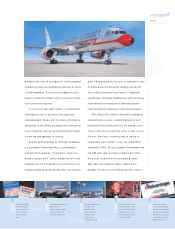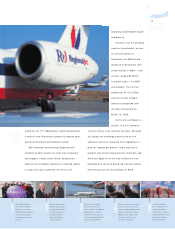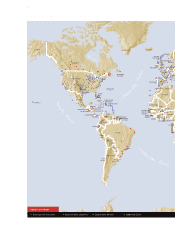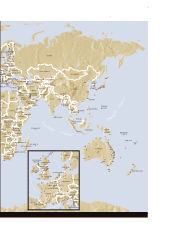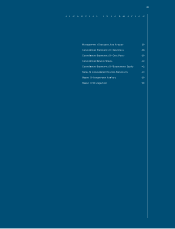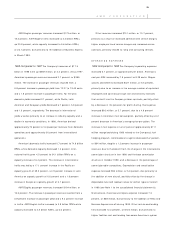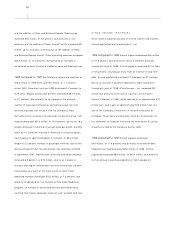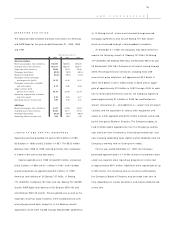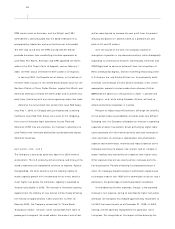American Airlines 1999 Annual Report Download - page 29
Download and view the complete annual report
Please find page 29 of the 1999 American Airlines annual report below. You can navigate through the pages in the report by either clicking on the pages listed below, or by using the keyword search tool below to find specific information within the annual report.
28
AMR Corporation (AMR or the Company) was incorporated in
October 1982. AM R’s principal subsidiary, American Airlines, Inc.
(American), was founded in 1934. Following the sale of AMR
Services, AM R Combs and TeleService Resources in the first
quarter of 1999, and the spin-off of AMR’s 83 percent interest in
Sabre Holdings Corporation (Sabre) in March of 2000, AMR’s
operations fall almost entirely in the airline industry.
RESULTS OF OPERATIONS
AMR’s net earnings in 1999 were $985 million, or $6.46 per
common share ($6.26 diluted). AMR’s income from continuing
operations in 1999 was $656 million, or $4.30 per common
share ($4.17 diluted). A labor disagreement that disrupted
operations during the first quarter of 1999 negatively impacted
the Company’s 1999 results by an estimated $225 million ($140
million after tax). The results for 1999 also include the following:
(i) American’s December 1998 acquisition of Reno Air, Inc. (Reno)
and AMR Eagle’s M arch 1999 acquisition of Business Express, Inc.
(Business Express), (ii) a gain of $83 million ($64 million after tax)
on the sale of AMR Services, AM R Combs and TeleService
Resources, which is included in discontinued operations, (iii) a
gain of approximately $213 million ($118 million after taxes
and minority interest) resulting from the sale of a portion of
the Company’s holding in Equant N.V. (Equant), of which
approximately $75 million ($47 million after tax) is included in
income from continuing operations, (iv) a gain of $40 million
($25 million after tax) related to the Company’s sale of its
investment in the cumulative mandatorily redeemable convertible
preferred stock of Canadian Airlines International Limited
(Canadian) and a $67 million tax benefit resulting from the tax
loss on the Company’s investment in Canadian, and (v) a charge
of approximately $37 million ($25 million after tax) relating to the
provision for certain litigation items. AMR’s net earnings in
1998 were $1.3 billion, or $7.78 per common share ($7.52
diluted). AMR’s income from continuing operations in 1998 was
$1.1 billion, or $6.60 per common share ($6.38 diluted).
REVENUES
1999 Compared to 1998 The Company’s revenues increased
$214 million, or 1.2 percent, versus 1998. American’s passenger
revenues increased by 0.1 percent, or $12 million. American’s
yield (the average amount one passenger pays to fly one mile) of
13.12 cents decreased by 2.7 percent compared to 1998. For
the year, domestic yields decreased 1.1 percent, while European,
Pacific and Latin American yields decreased 7.2 percent, 6.0
percent and 4.5 percent, respectively. The decrease in domestic
yield was due primarily to increased capacity, the labor disagree-
ment during the first quarter of 1999, and the impact of
international yield decreases on domestic yields. The decrease
in international yields was due primarily to weak economies
in certain parts of the world, large industry capacity additions
and increased fare sale activity.
American’s domestic traffic increased 2.1 percent to 76.4
billion revenue passenger miles (RPMs), while domestic capacity,
as measured by available seat miles (ASMs), increased 4.1
percent. The increase in domestic traffic was due primarily to the
addition of Reno. International traffic grew 4.6 percent to 35.7
billion RPMs on a capacity increase of 3.1 percent. The increase in
international traffic was led by a 44.2 percent increase in the
Pacific on capacity growth of 44.1 percent, a 5.7 percent increase
in Europe on capacity growth of 7.3 percent, partially offset
by a 1.9 percent decrease in Latin America on a capacity decrease
of 5.1 percent. In 1999, American derived approximately 70
percent of its passenger revenues from domestic operations and
approximately 30 percent from international operations.
MANAGEMENT’S DISCUSSI ON AND ANALYSIS


